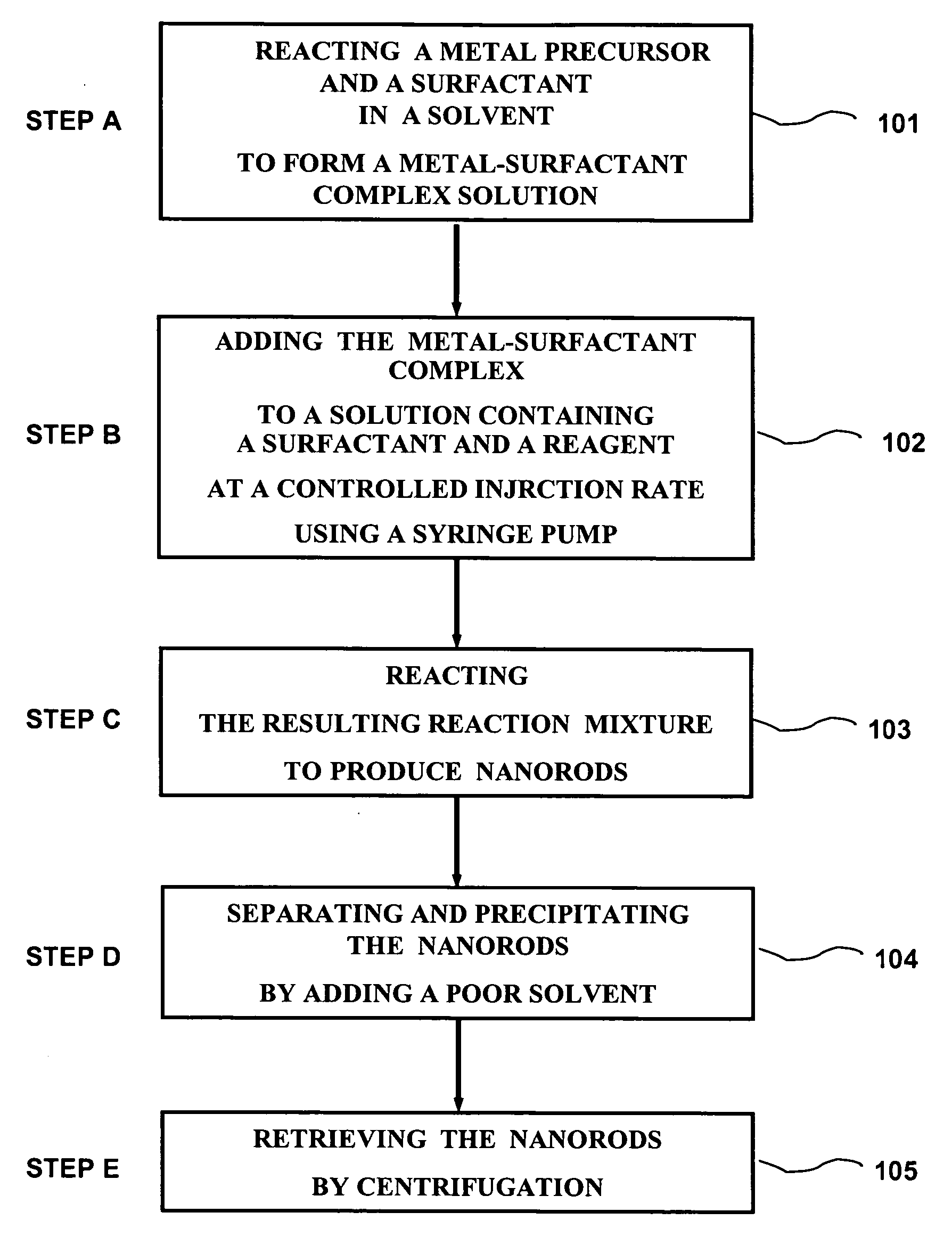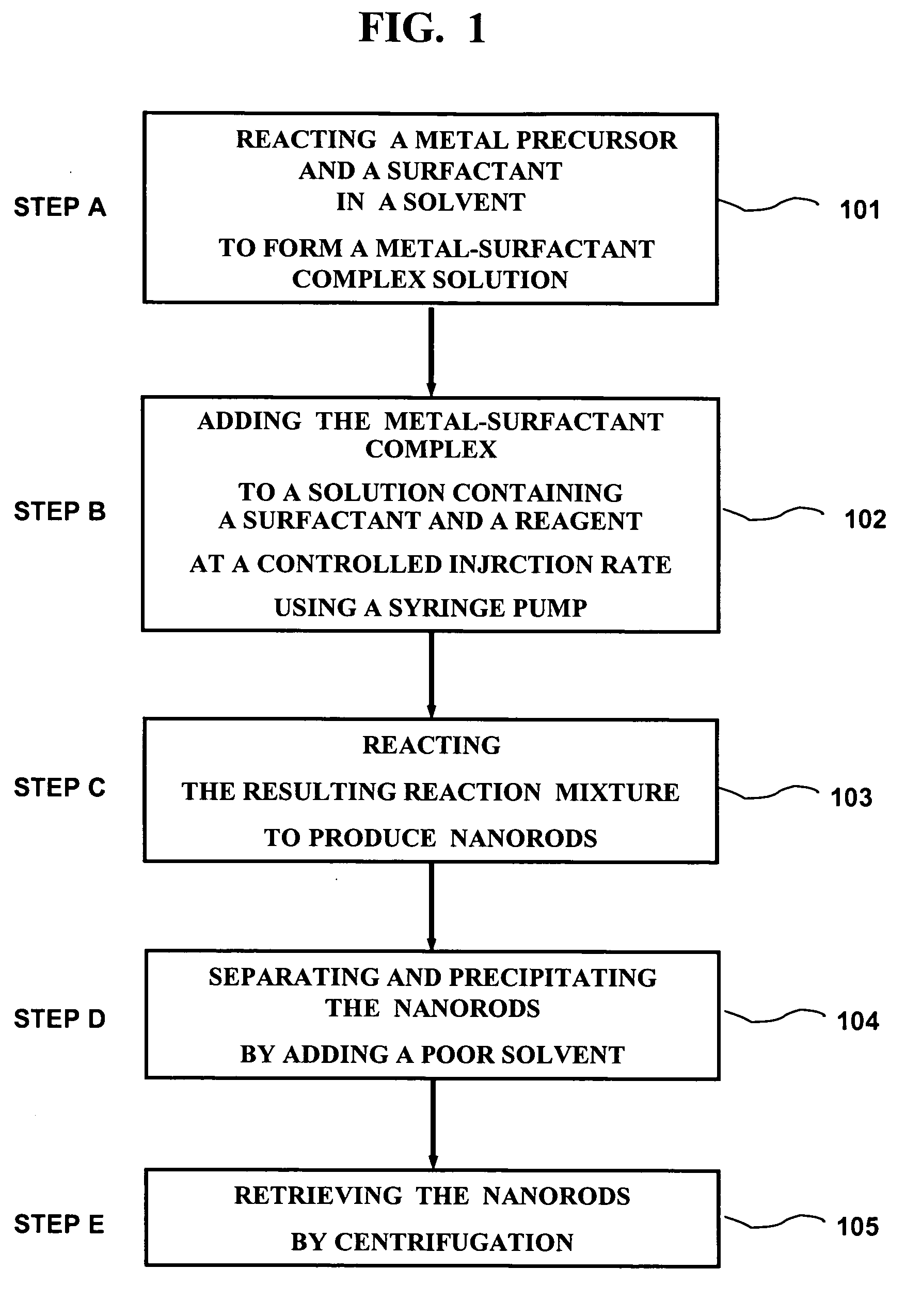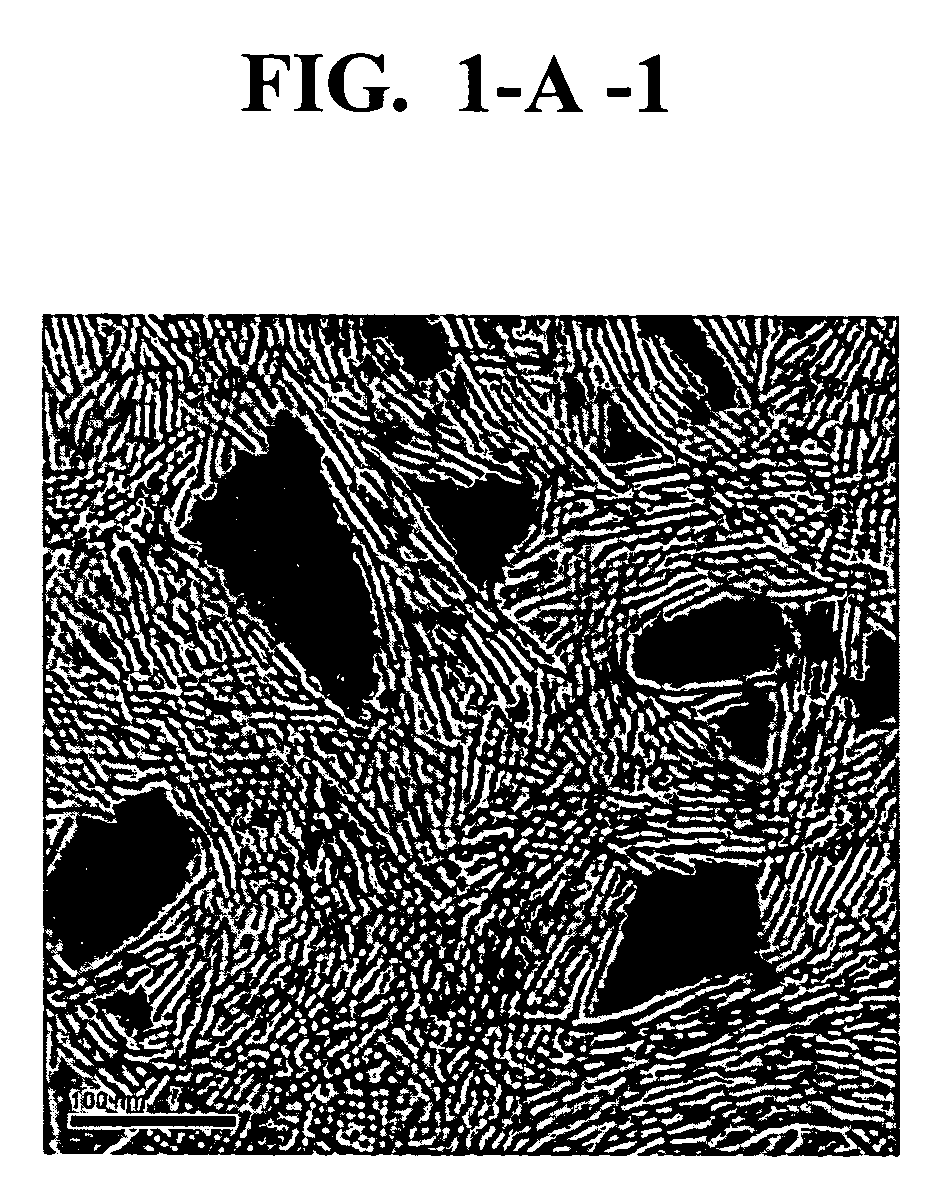Method of synthesizing nanorods by reaction of metal-surfactant complexes injected using a syringe pump
a metal-surfactant complex and nanorod technology, which is applied in the field of synthesizing nanorods by reaction of metal-surfactant complexes injected using a syringe pump, can solve the problems of complex synthesis procedures and low reproducibility of nanorods of uniform siz
- Summary
- Abstract
- Description
- Claims
- Application Information
AI Technical Summary
Problems solved by technology
Method used
Image
Examples
embodiment 1-a
Synthesis of Uniform Iron Phosphide (Fe2P) Nanorods: 1-A
[0052] The first exemplary embodiment is to synthesize iron phosphide (Fe2P) nanorods uniform in diameter according to the present invention disclosed here. A volume of 10 mL of Fe-TOP complex solution prepared by mixing 0.2 mL of iron pentacarbonyl (Fe(CO)5) or 1.52 mmol and 10 mL of trioctylphosphine (TOP) is injected into a mixture containing 10 mL of octylether and 2 mL of oleylamine at 300° C. using a syringe pump at the injection rate of 10 mL / hr. A TEM (Transmission Electron Microscope) image of the resulting nanorods of iron phosphide (Fe2P) is shown in FIG. 1-A-1 and exhibits that the resulting iron phosphide (Fe2P) nanorods have the size of 5 nm (diameter)×88 nm (length) and are uniform in diameter. A HRTEM (High Resolution Transmission Electron Microscope) image shown in FIG. 1-A-2 indicates that the resulting nanorods are highly crystalline, and also that the direction of the growth is along the direction. A corre...
embodiment 1-b
Synthesis of Uniform Iron Phosphide (Fe2P) Nanorods: 1-B
[0053] Under the same reaction conditions employed in Embodiment 1-A with the exception of the reduced injection rate of the syringe pump at 5 mL / hr, iron phosphide (Fe2P) nanorods are synthesized. An exemplary TEM image of the resultant nanorods shown in FIG. 1-B reveals that the average size is 6 nm (diameter)×107 nm (length) and the diameters are exceptionally uniform.
embodiment 1-c
Synthesis of Uniform Iron Phosphide (Fe2P) Nanorods: 1-C
[0054] Under the same reaction conditions employed in Embodiment 1-A with the exception of the reduced injection rate of the syringe pump at mL / hr, iron phosphide (Fe2P) nanorods are synthesized. An exemplary TEM image of the resultant nanorods shown in FIG. 1-C reveals that the average size is 6 nm (diameter)×290 nm (length) and the sizes in diameter are exceptionally uniform.
PUM
 Login to View More
Login to View More Abstract
Description
Claims
Application Information
 Login to View More
Login to View More - R&D
- Intellectual Property
- Life Sciences
- Materials
- Tech Scout
- Unparalleled Data Quality
- Higher Quality Content
- 60% Fewer Hallucinations
Browse by: Latest US Patents, China's latest patents, Technical Efficacy Thesaurus, Application Domain, Technology Topic, Popular Technical Reports.
© 2025 PatSnap. All rights reserved.Legal|Privacy policy|Modern Slavery Act Transparency Statement|Sitemap|About US| Contact US: help@patsnap.com



